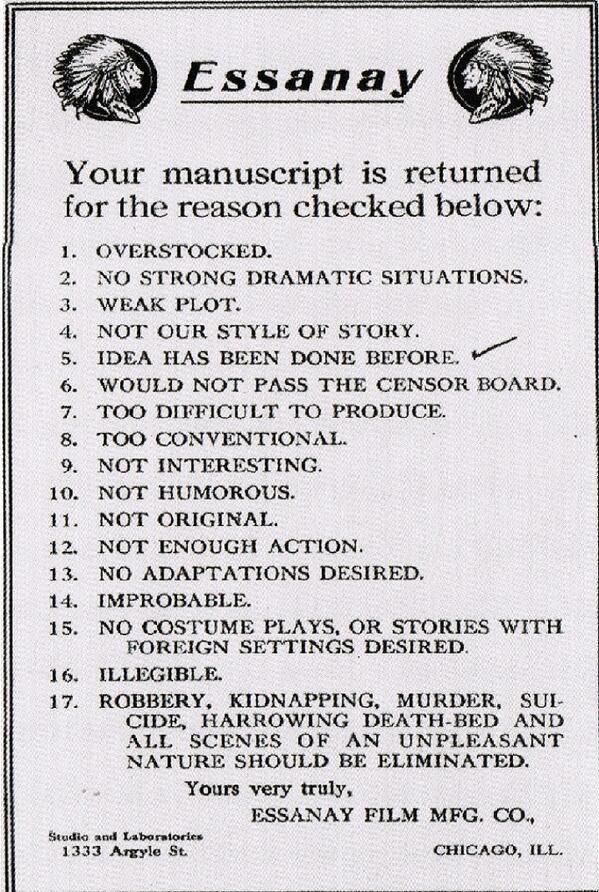Screenwriters sending scripts to Essanay Studios, a Chicago company that produced silent films between 1907 and 1917, received this form rejection letter in response to their submissions. Here Essanay identified several common problems with scripts; some (“Too difficult to produce”) were probably more helpful to aspiring writers than others (“Not interesting”).
Essanay, named after the initials of its founders George Spoor and Gilbert Anderson, made Westerns and comedies from its Uptown Chicago headquarters and in California. (Its specialty in the Western explains the use of a stereotyped “Indian chief” head as logo.) Charlie Chaplin was a contract player for the company between 1915–1916 and made The Tramp while he was there. Chicago Tribune reporter Michael Wilmington suggests that Chaplin’s departure for a more lucrative contract in 1916 “hastened Essanay’s demise,” causing “a fatal rupture” between the two founders struggling with a sudden loss in income.
In Chicago, the second-largest film market in the country in the early silent film era, officials established a city-specific censorship code in 1907. Under this system, the police issued permits for people wishing to show movies in the city. The Illinois and United States Supreme Courts upheld this approach to regulation in 1909, and the local apparatus remained in force even as national organizations tried to standardize movie censorship in the 1920s and 1930s. Essanay may have been thinking of this city “censor board” when stipulating its reasons for rejection No. 6 and 17.
I first saw this on the website Open Culture; Open Culture found it on the writer Ted Gioa’s Twitter feed.
